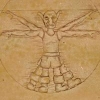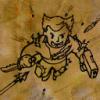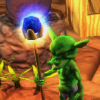Just wondering if anyone could help me out with this somewhat general musing on game art...
As a game programmer, you're probably not going to double as an artist but you're still always going to need some sort of graphics for a game to work at all, hence poorly-drawn functional programmer art that acts as a placeholder for later proper art done by somebody else.
However, it's clear in recent years in the independent sphere that more stylized, simplistic, often retro style graphics have become somewhat fashionable and despite their simplicities have served some commercially successful games quite well even for 1-person development teams such as with VVVVVV or Minecraft.
What I'm looking for is some sources of inspiration on developing such a visual style and producing quick but functional and not distractingly poor graphics. Also guides or tutorials on creating this sort of thing would be great too. I've seen some pixel art tutorials but they tend to be geared toward producing proper artist-quality sprites like you'd seen on a SNES.
What are some games with interesting, effective and simple art styles? What are some good pieces of advice to take into account when you're trying to create a simple set of sprites like that? Any techniques like... only use a certain number of colours perhaps, etc. etc.
I'm probably asking a very general and possibly poorly-worded question, but I've been thinking about this for a while, and unable to come up with much myself... I thought I'd ask and see if other people could point me towards something that might inspire me.
Methods for creating Effective "Programmer Art"?
For an artist of limited ability and experience trying to produce game-quality graphics I would personally not recommend pixel art at all. Both vector art and 3D art are better suited to this because they have features to automate production of geometric figures, solid color fills, simple gradients, and simple transform and pivot animations. Beyond that, most of the trick is in choosing the game's content to be things that are easy to draw or model. Either avoid humanoids at all, or if you really want a humanoid main character consider making that be the one piece of art you purchase. A humorous or satirical game concept will be a more natural combination with an art style like Yoshi's Island or South Park than a drama or suspense story would. An abstract game involving spheres, cubes, walls, and/or gemstones is the easiest thing to produce in 3D. Plants are also relatively easy to produce in both 2D and 3D. Also you can work with your skills as a cameraperson - still photography or frames of video which you take yourself (with the subject's permission unless you own the subject) can be traced to create a cartoon. However be aware that it's illegal to trace someone else's work and pass that off as your own work.
I want to help design a "sandpark" MMO. Optional interactive story with quests and deeply characterized NPCs, plus sandbox elements like player-craftable housing and lots of other crafting. If you are starting a design of this type, please PM me. I also love pet-breeding games.
Well, defining a visual simple, but still appealing style is difficult. Almost every stylized game polarised ( Minecraft, WoW, TF2 etc.), so using stylized art as indie is like running into a dark tunnel hoping to find the end without hitting the wall first, you just can't predict its outcome.
IMHO the most important element of stylized art is consistency. Choose one style and stick to it and make everything in this style. This is the reason that most programmer art games look like s..t because they mix too many styles (abstract placeholders + downloaded freebies from different sources + attempts of makingyour own art).
The second tip is to neverever underestimate the amount of work when making your own art. I choose a 3D approach and the workflow is daunting (modelling -> unwrapping - > texturing -> rigging -> animating).
The third tip is to learn some degree of art techniques. Somtimes it is easier to model and render an object and paint over it , instead of trying to paint a sprite using correct perspective etc. When doing your own art, you will need two things: first a tablet,a must have for any serious art attempts (wacom) and secondly practise,practise, practise. With practise you will be surprised how fast your skills improves.
IMHO the most important element of stylized art is consistency. Choose one style and stick to it and make everything in this style. This is the reason that most programmer art games look like s..t because they mix too many styles (abstract placeholders + downloaded freebies from different sources + attempts of makingyour own art).
The second tip is to neverever underestimate the amount of work when making your own art. I choose a 3D approach and the workflow is daunting (modelling -> unwrapping - > texturing -> rigging -> animating).
The third tip is to learn some degree of art techniques. Somtimes it is easier to model and render an object and paint over it , instead of trying to paint a sprite using correct perspective etc. When doing your own art, you will need two things: first a tablet,a must have for any serious art attempts (wacom) and secondly practise,practise, practise. With practise you will be surprised how fast your skills improves.
Thanks for the input... got any specific recommendations for a relatively cheap but functional tablet?
Also you can work with your skills as a cameraperson - still photography or frames of video which you take yourself (with the subject's permission unless you own the subject) can be traced to create a cartoon.
This. Drawing over photos you've taken or using some program to cartoonify pictures is a simple tool to create some decent artwork. Even with 3D art, it helps a great deal to have reference pictures.
Procedural methods are awesome for creating programmer art. I personally use them quite extensively. Procedural textures, etc... For example, these older shots of my current project:
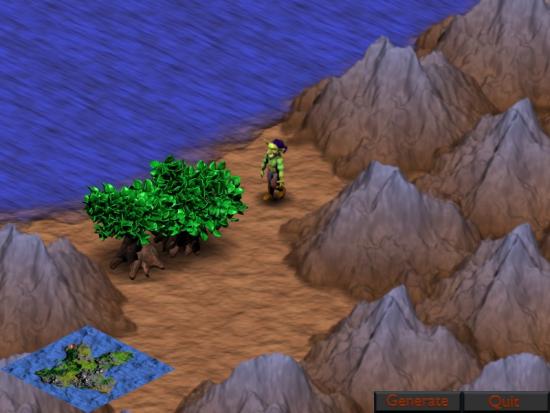
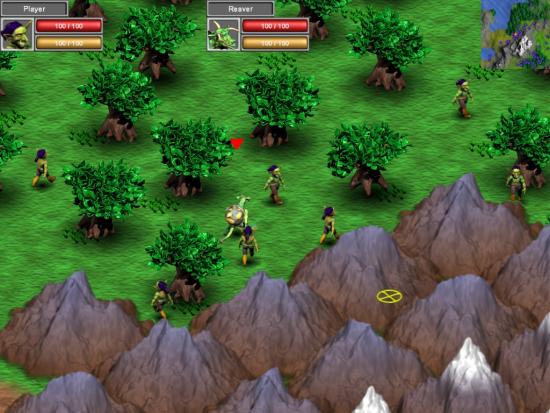
( source: My journal)
In the above, I am using procedural textures or procedurally generated artwork in a number of different places. The ground textures are procedural, as is the water, composited using simple noise functions and color scales. The mountains are procedural. They are built using a procedural heightmap to form the mountain shape, mapped with a color scale and rendered. The leaves on the tree use a procedural texture, as do the trunks of the trees. While I do traditional modeling for many things, I'm pretty bad at texture painting so I use procedurals a lot to get colormaps that I blend together to get a final texture. Even the world in my game is procedural, with the mini-map being generated when the map is generated. I talk quite a bit about my techniques in my blog if you're interested.


( source: My journal)
In the above, I am using procedural textures or procedurally generated artwork in a number of different places. The ground textures are procedural, as is the water, composited using simple noise functions and color scales. The mountains are procedural. They are built using a procedural heightmap to form the mountain shape, mapped with a color scale and rendered. The leaves on the tree use a procedural texture, as do the trunks of the trees. While I do traditional modeling for many things, I'm pretty bad at texture painting so I use procedurals a lot to get colormaps that I blend together to get a final texture. Even the world in my game is procedural, with the mini-map being generated when the map is generated. I talk quite a bit about my techniques in my blog if you're interested.
Thanks for the input... got any specific recommendations for a relatively cheap but functional tablet?
A good entry level tablet is the Wacom Bamboo Pen. With every tablet you need some pratise to draw on a tablet while looking at the screen, but after some time you will get used to it.
PS: As JTippetts mentioned, procedurally artwork works great, here's a free tool to easily create procedural textures, if you want to avoid writing your own generation code: mapzone
A game I'm sure everyone knows about that is a good example of a simple consistent style is Cannabalt
It comes across to me as well done "programmer art".
It's 8-bit style is hot these days (on mobile devices anyway).
It comes across to me as well done "programmer art".
It's 8-bit style is hot these days (on mobile devices anyway).
This topic is closed to new replies.
Advertisement
Popular Topics
Advertisement
Recommended Tutorials
Advertisement




